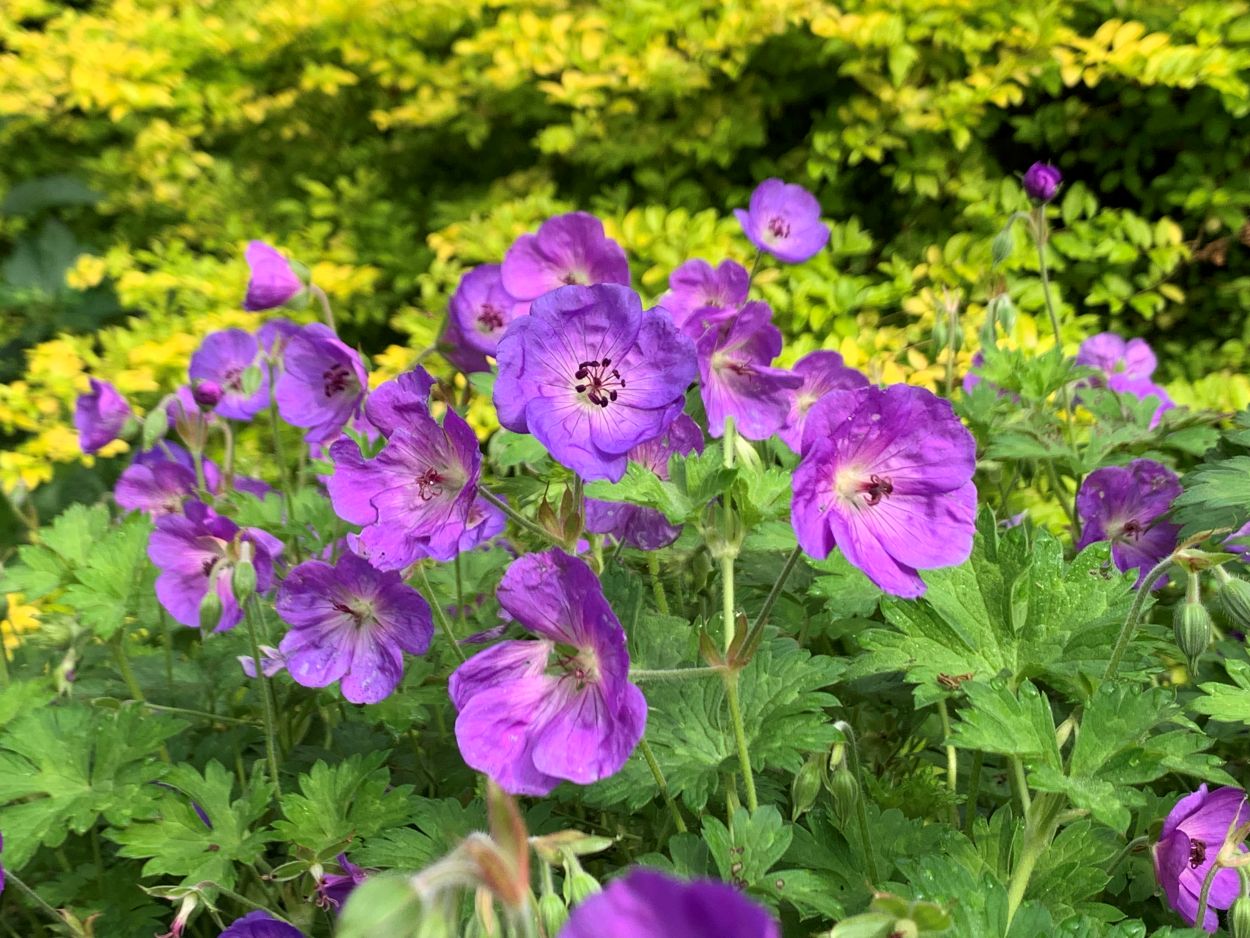
UT Gardens’ June Plant of the Month
Submitted by Jennifer Northam, collections manager and horticulturist, UT Gardens, Knoxville
KNOXVILLE, Tenn. – Hardy geraniums, also known as cranesbills, are loved in the garden because of their versatility and durability.
They are commonly known as cranesbills because their fruit is shaped like a crane’s bill. The Greek word geranion translates to crane in English. There are around 300 species of hardy geraniums. They can be found in several countries and oceanic islands across the world. Species range in height from only a few inches to species like Geranium arboreum that can grow 12-foot-tall.
Several species of hardy geraniums are very easy to grow and drought-tolerant once established. They can be used in understory plantings, under trees and shrubs, popped into bare spots and trouble areas where other plants will not grow. Include them in rock gardens, woodland settings, as ground covers, in containers, in partial shade gardens and in mixed perennial borders and beds.
Several species and cultivars will bloom in spring and then again in the fall, and some will bloom all season long from about April to September. They attract bees and butterflies and are deer and rabbit resistant. Many of the hardy geranium species growing in Knoxville send out their first buds around mid-April.
Flowers come in shades of white, pink, lavender, magenta and blue. Some varieties have darker veins on the petals, which is very unique and attractive. Another great quality of these perennials is that the foliage alone is beautiful for most of the year. Leaves can be green, burgundy, gray-green and yellow and come in all kinds of different shapes and textures. Many varieties will turn colors of purple, yellow, orange and red in the fall.
Most of the hardy geraniums we grow in Knoxville prefer partial shade and good drainage. They will need more shade in the heat of West Tennessee and most of the South and will not tolerate wet spots.
After the first flush of flowers in the spring, plants can be sheared back to basal foliage and will have a good chance of blooming again. Geranium hybrid ‘Rozanne’ is a powerhouse, blooming strongly in the fall as well as spring with no need to cut back. The cultivar is a favorite for its strong vigor, large blue blooms, long bloom times, resilience and functionality in the garden. Geranium ‘Rozanne’ can be found in the Post Wild Perennial Garden, as well as G. macrorrhizzum ‘Bevan’s Variety’, G. pratense ‘Boom Chocolatta’, and G. sanguineum ‘Max Frei’.
We are trialing a new geranium hybrid ‘Huggy Bear’ in Knoxville from Intrinsic Perennial Gardens, Inc. This variety has unique chocolatey bronze foliage and lavender-purple flowers. They grew well over the summer in full sun and doubled in size last fall, thriving in milder temperatures. Vigorous growth followed this spring that contrasted perfectly with several blooms. In Crossville, you’ll find ‘Johnson’s Blue’ and ‘Biokovo’ cultivars planted in the entrance gardens and ‘Karmina’ in the perennial beds.
There are so many cultivars to choose from, one could spend decades collecting different ones and trying them all over a garden area. Consider species and cultivars that will do well for your hardiness zone. Hardy geraniums do not thrive in warmer parts of Tennessee and the South, so make sure these are in the shade from midday on. From full sun to part shade, difficult to grow garden spots, multiple season interest, and overall charm, hardy geraniums are a real winner to use in the garden.
The UT Gardens includes plant collections located in Knoxville, Crossville and Jackson, Tennessee. Designated as the official botanical garden for the State of Tennessee, the UT Gardens are part of the UT Institute of Agriculture. The Gardens’ mission is to foster appreciation, education and stewardship of plants through garden displays, educational programs and research trials. The Gardens are open during all seasons and free to the public. For more information, see the Gardens website: utgardens.tennessee.edu.
The University of Tennessee Institute of Agriculture is comprised of the Herbert College of Agriculture, UT College of Veterinary Medicine, UT AgResearch and UT Extension. Through its land-grant mission of teaching, research and outreach, the Institute touches lives and provides Real. Life. Solutions. to Tennesseans and beyond. utia.tennessee.edu.